Children are always full of ideas, ideas not yet restricted by life experiences or society-induced mindsets. Their open minds soar up in the sky of their “anything is possible” imagination. Here is what happens when some of children’s ideas get real.
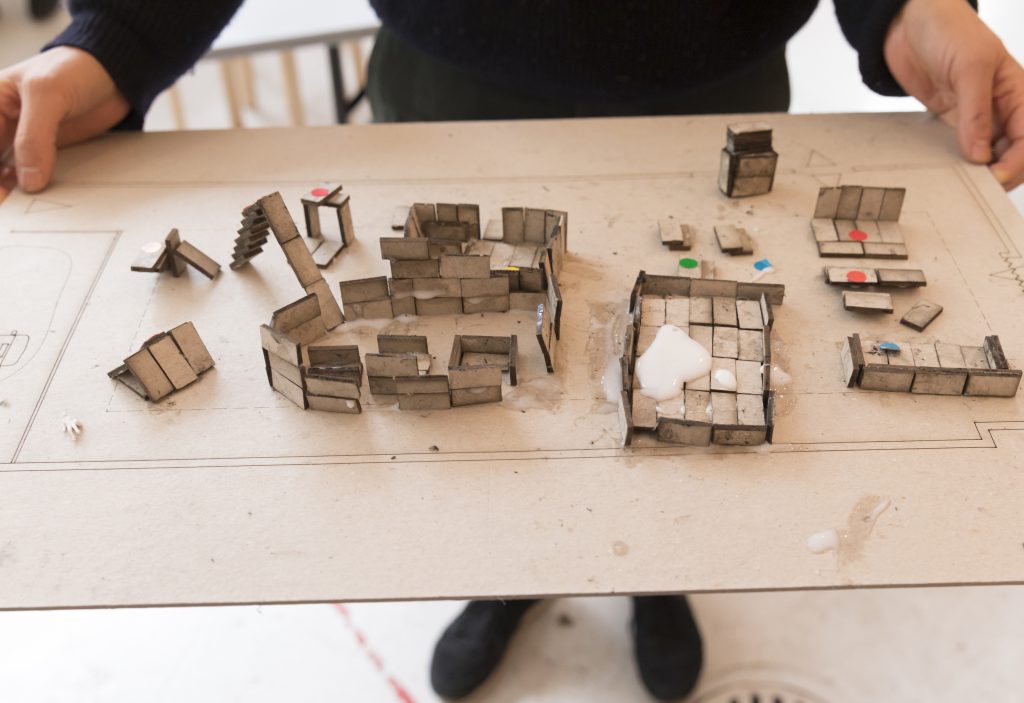
London based architectural practice Matt + Fiona has engaged some 100 school children to convert a former fire engine fixing hall in South London into the Mega Maker Lab – a creative space their peers.
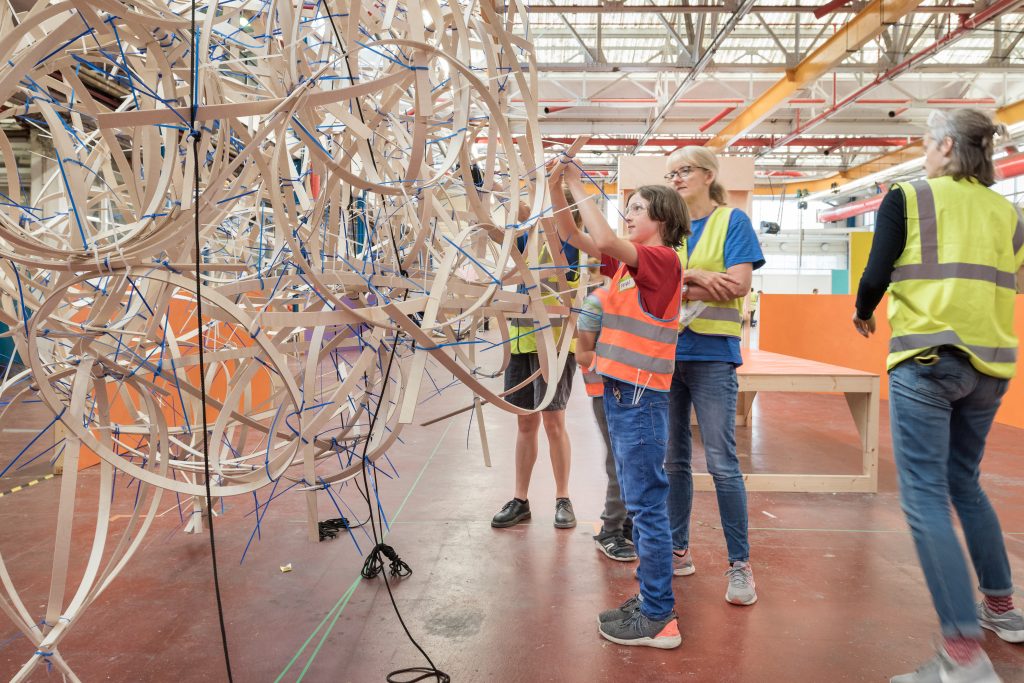
The Mega Maker Lab: by Matt + Fiona and children
Together with the designers, local children decided what a maker’s space should be like and include, and created a perfect lab suitable for a variety of activities for children aged between 5 and 12.
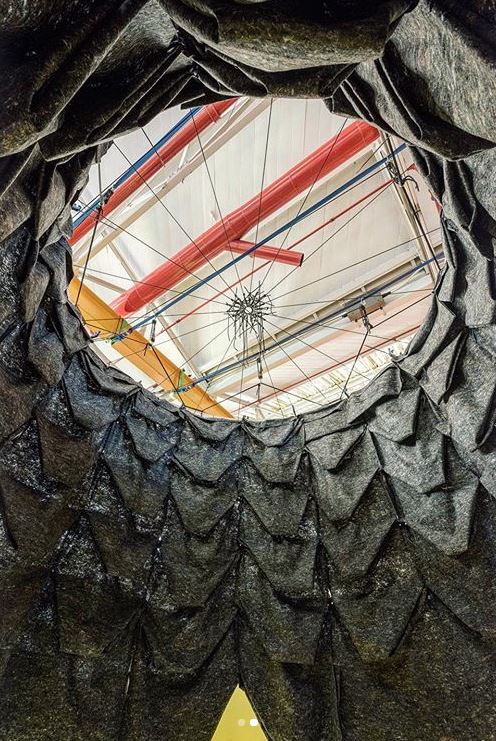
The Mega Maker Lab: by Matt + Fiona and children
The resulting landscape is a number of ramps and platforms suggesting a route around the Lab but at the same time allowing children to make up their own pathways if they wish to. A system of pulleys holds up aerial elements: yet another way of children’s interaction with visitors and means of changing the atmosphere of different parts of the space.
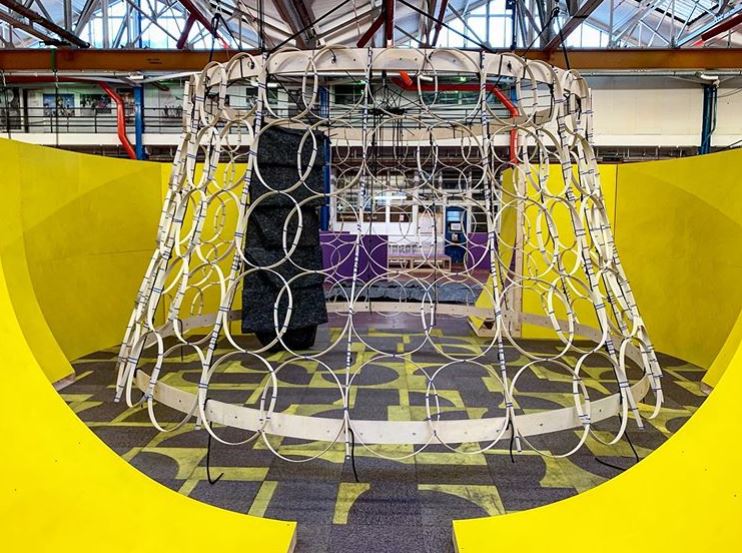
The Mega Maker Lab: by Matt + Fiona and children
All the ideas are the result of previous workshops with children, who were quite skeptical in the beginning and pleasantly shocked to see their designs realized in the end.
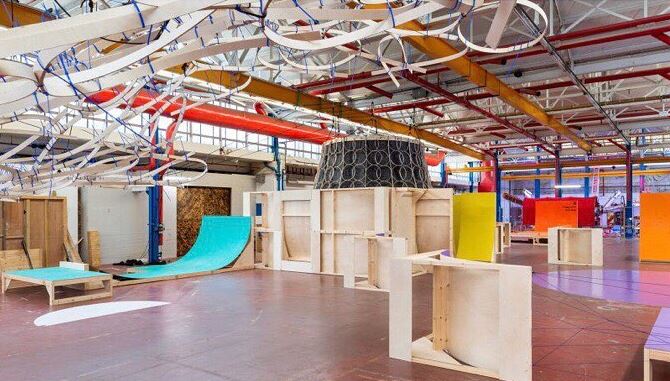
The Mega Maker Lab: by Matt + Fiona and children
The same architects, Matt+ Fiona, have also held another workshop with school children in the city of Hull, to create a den with moving walls on their schoolgrounds.

The learning space by Matt + Fiona and the school children
The project aimed to develop a learning space for extracurricular activities for the pupils. Children were encouraged to bring in their ideas in an open workshop.

The learning space by Matt + Fiona and the school children
The resulting green timber den acts both as an open learning space and an enclosed ‘snug’. It boasts a mono-pitch roof with four large pivoting counter-weighted doors: when open, they provide a sheltered place outside. The structure also features a lookout tower – for those who like to have a high-level lookout and survey the allotment.
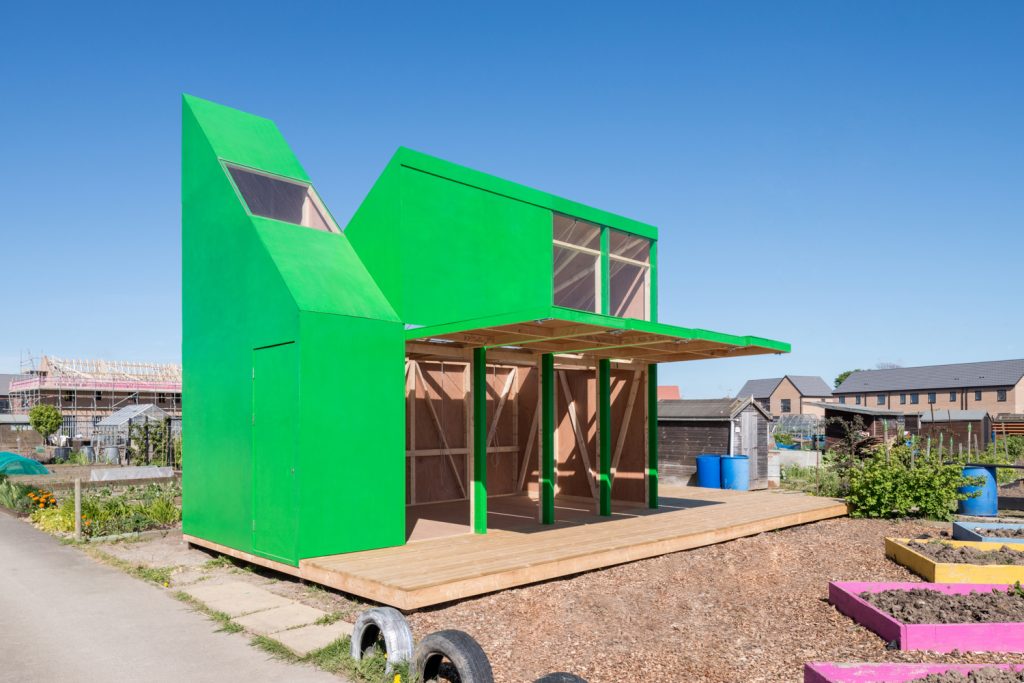
The learning space by Matt + Fiona and the school children
Madrid based Enorme Studio, in collaboration with local architects Juan Castillo and Miguel Heredia, have held a workshop with children that resulted in construction of a pavilion in Chihuahua, Mexico.

The Arachi pavilion by Enorme Studio and children
The Arachi pavilion is designed to provide a sheltered space for local events, as well as for children to play and socialize on a sandy square.
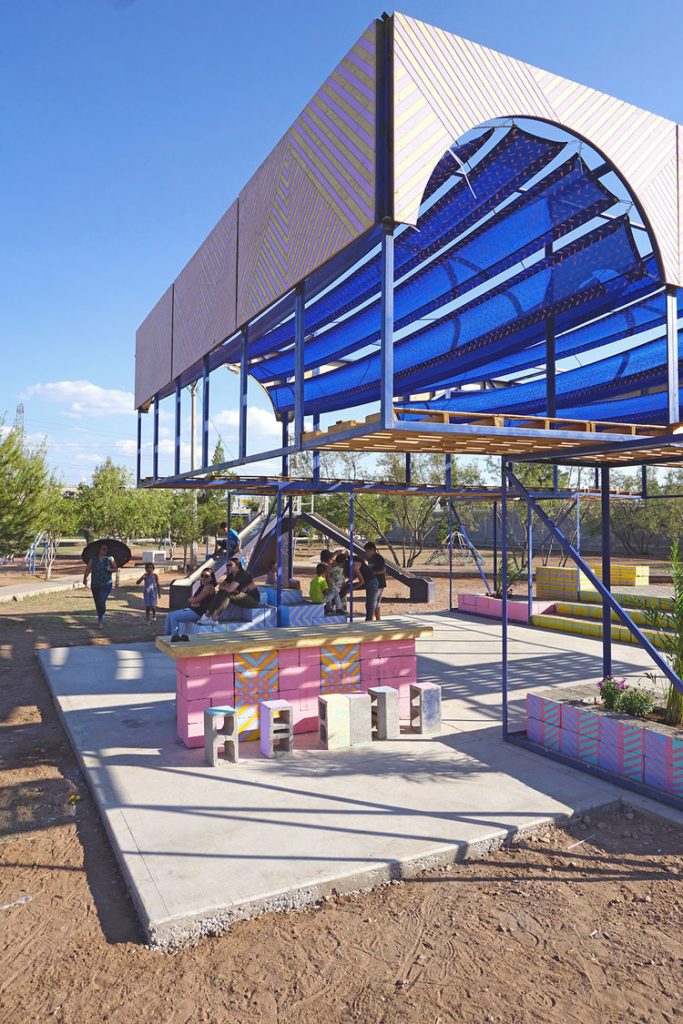
The Arachi pavilion by Enorme Studio and children
The “great canopy” is supported by four blue-painted metal frames and colorful pink and yellow patterned panels with arched cutouts wrapped around the top.
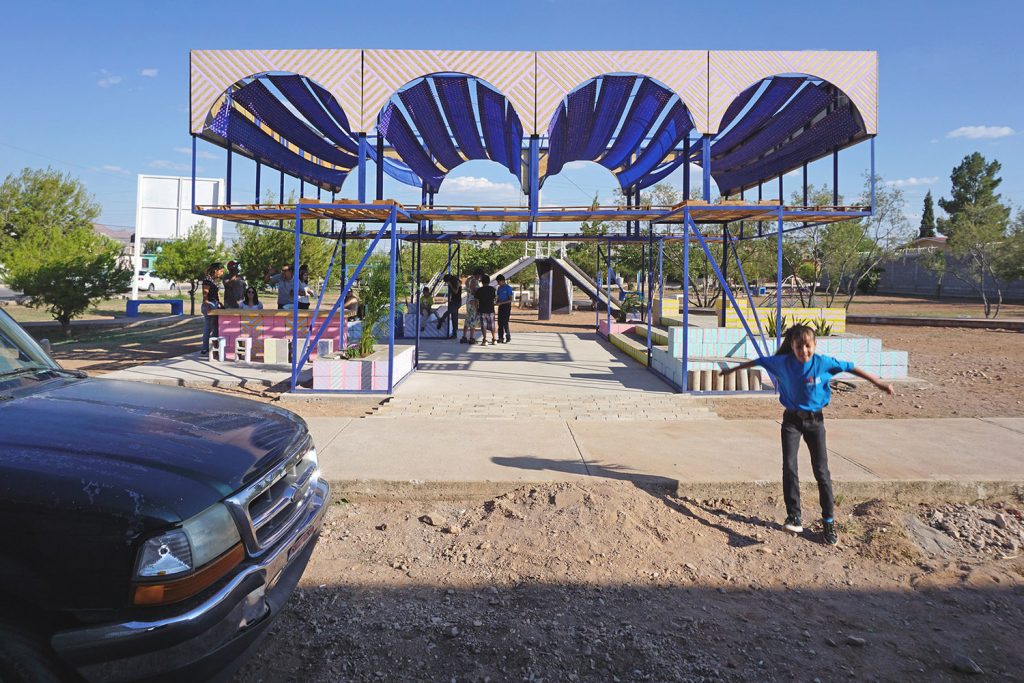
The Arachi pavilion by Enorme Studio and children
The space is equipped with stacks of concrete blocks to form a sort of furniture. Another stack of blocks creates a stage for performances. Children have painted it all with the colorful geometric patterns of alebrijes – the symbols that define the mariachis, traditional costumes of the Tarahumara women.